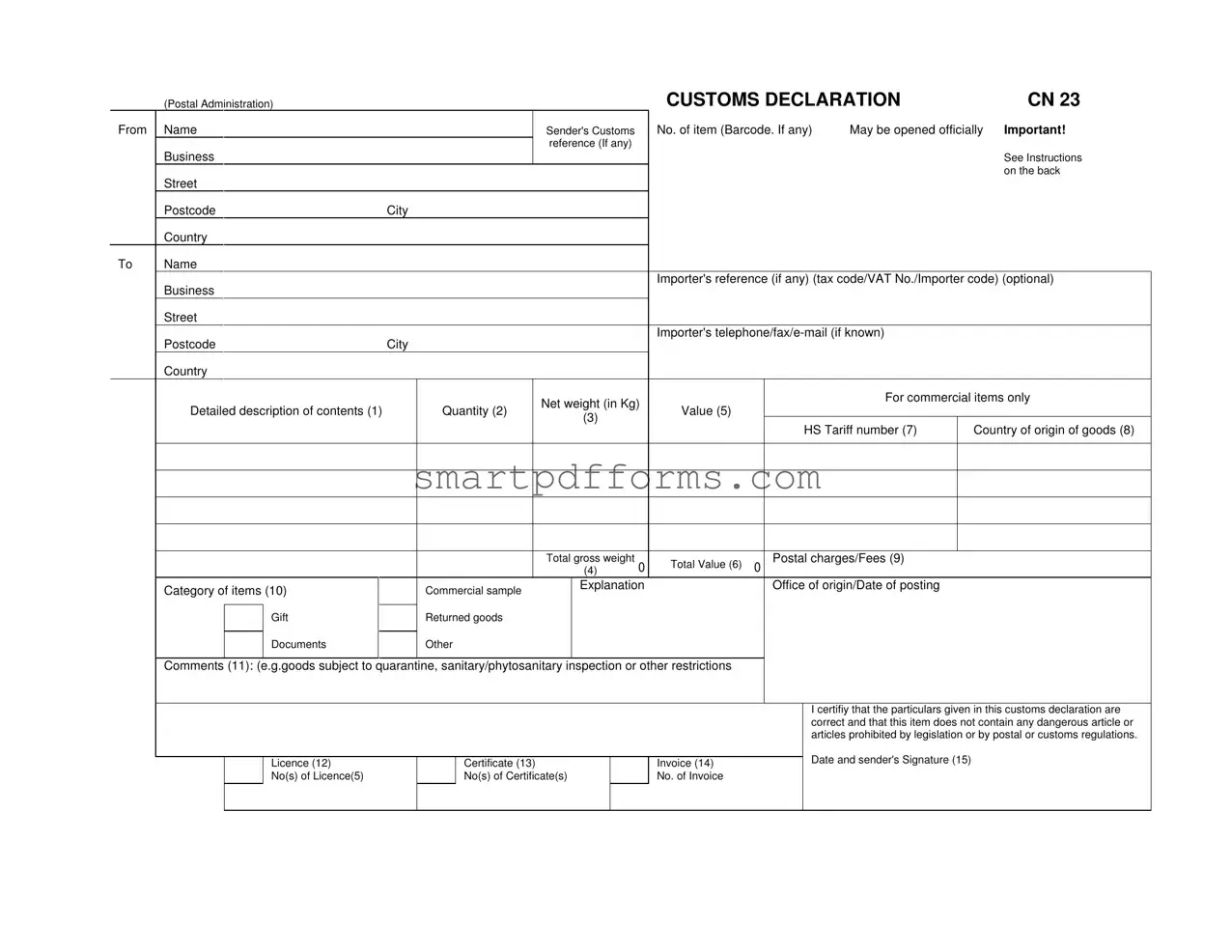- What is a CN 23 Customs Declaration form?
The CN 23 Customs Declaration form is a document used by senders to declare the details of items being sent internationally through postal services. This form is required for customs clearance and informs customs authorities about the contents of the package, including the type of items, their quantity, value, and other relevant details. It helps in ensuring that the items comply with the destination country's regulations and laws.
- When do I need to fill out a CN 23 Customs Declaration form?
Whenever you are sending a package internationally that does not qualify for the simpler CN 22 form (usually used for items of lesser value), you need to fill out the CN 23 form. This form is typically required for items of higher value or for packages requiring more detailed information for customs clearance.
- What information do I need to provide on the CN 23 form?
You need to provide detailed information about the sender and the recipient, including names, addresses, and contact details. For the item(s) being sent, you must include a detailed description, quantity, value, net and gross weight, HS Tariff number, and country of origin. Additionally, you will need to specify the category of the item(s) being sent (e.g., commercial sample, gift, returned goods) and include any applicable comments, licences, certificates, or invoices.
- Why is the HS Tariff number important?
The HS Tariff number, also known as the Harmonized System code, is a standardized numerical method of classifying traded products. It is required on the CN 23 form to help customs authorities identify the exact nature of the goods being imported and to apply the correct tariffs and taxes. Providing the correct HS code facilitates smoother and faster customs clearance.
- How do I determine the value of the items I am sending?
The value of the items you are sending should reflect their actual purchase price or fair market value if they were not purchased recently. It's important to provide an accurate declaration of value, as under-declaring can lead to fines and over-declaring may increase the customs duties and taxes imposed on the recipient.
- Are there any items I cannot send using the CN 23 Customs Declaration form?
Yes, there are restrictions on what can be sent internationally, and these can vary by country. Generally, dangerous goods, perishable items, and items prohibited by legislation or postal regulations in either the sending or receiving country are not allowed. Always check the specific regulations of both the sending and receiving countries before shipping.
- What happens if I fill out the form incorrectly?
If the CN 23 Customs Declaration form is filled out incorrectly, it can cause delays in shipping, and your package may be held at customs. In some cases, incorrect or incomplete information can result in fines or the return of your package to the sender. It's crucial to fill out the form accurately and completely.
- Is it necessary to sign the CN 23 Customs Declaration form?
Yes, your signature is required on the CN 23 form to certify that the information provided is accurate and that the package does not contain any prohibited items. The declaration that the information is correct and the item complies with all regulations is a legal requirement for international shipping.

